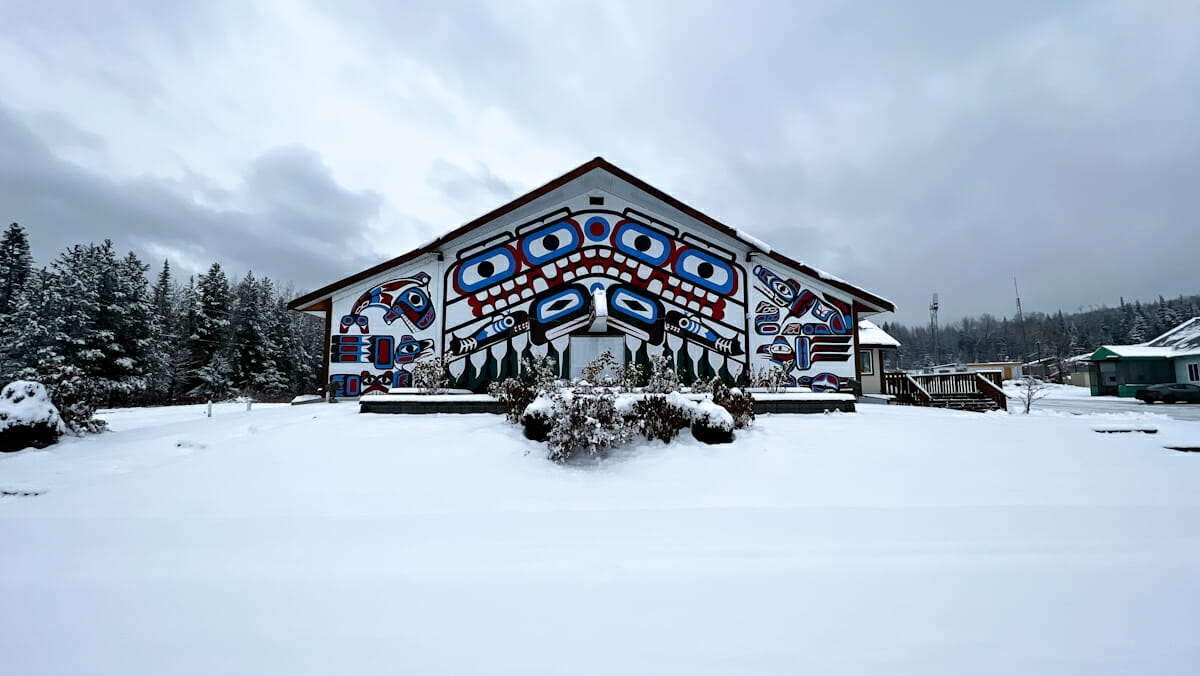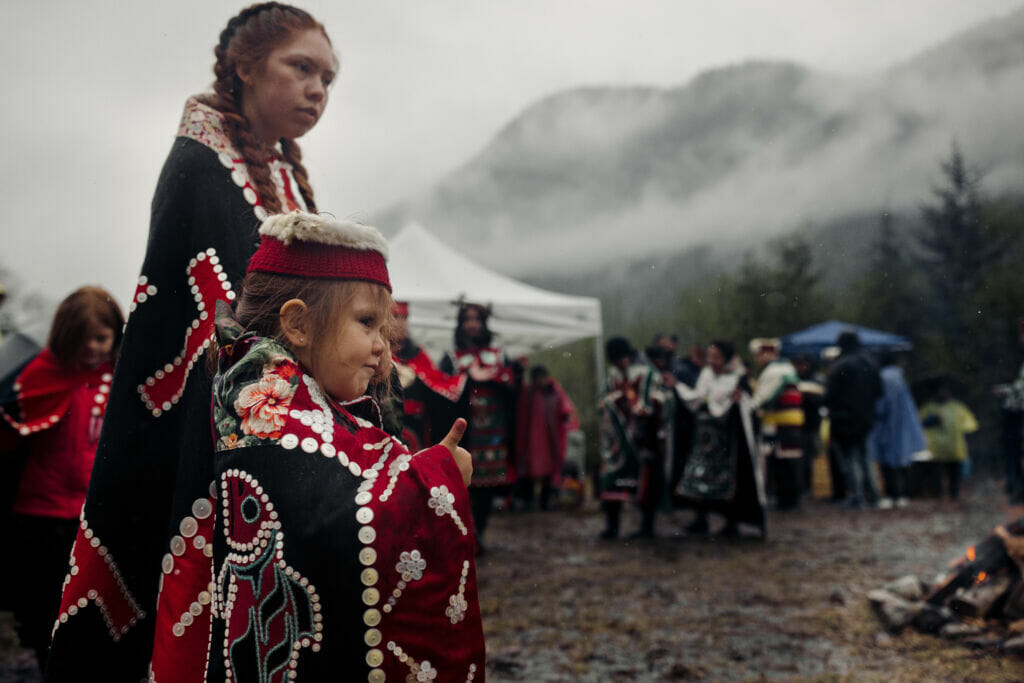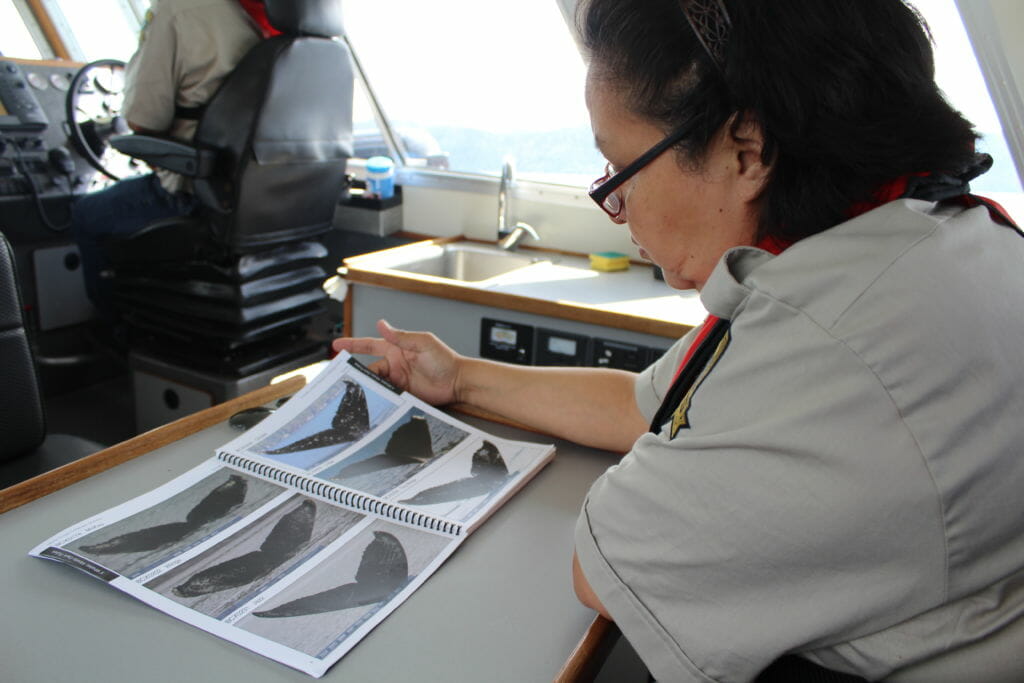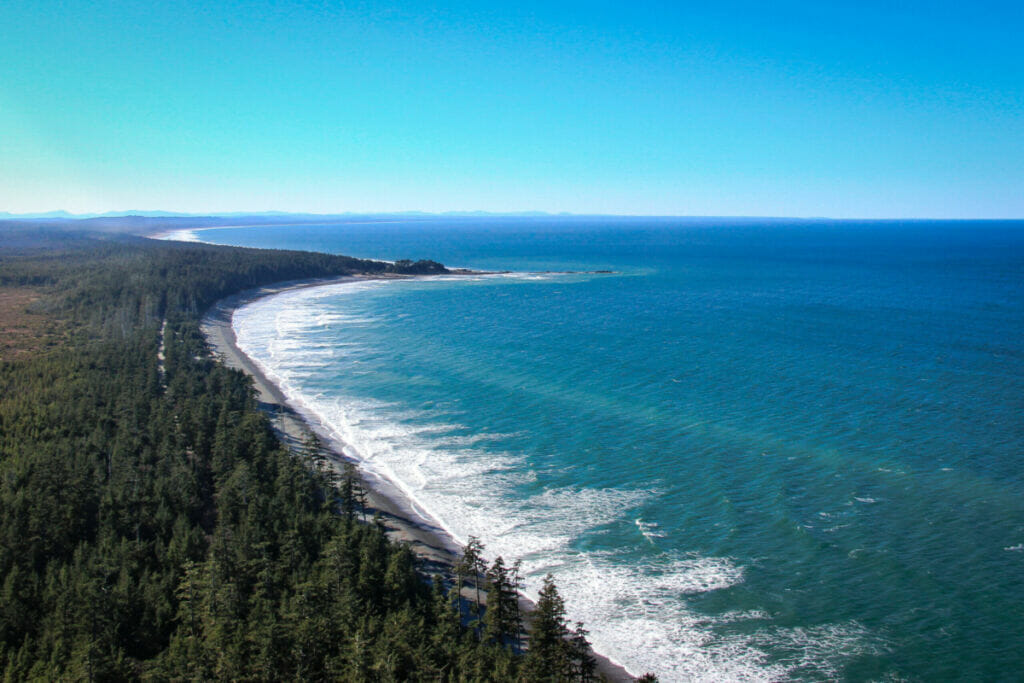Estimated Reading time

9 Mins
Year in Review: 22 Wins from First Nations in 2022
First Nations continued to demonstrate unwavering leadership, winning widespread recognition for their efforts to steward their territories and build sustainable, local economies.

In 2022, First Nations in the Great Bear Rainforest and Haida Gwaii have made headlines for their Guardian and stewardship programs, leadership in sustainable energy, and investments in culture and community-owned businesses.
Looking back over the last year, there were many bright spots and important wins. Three First Nations declared Indigenous Protected and Conserved Areas (IPCAs). Coastal First Nations removed hundreds of tonnes of debris from oceans and shorelines. Solar panels and heat pumps were installed and high-speed internet rolled out to coastal communities. First Nations succeeded in restoring ancestral place names and repatriating valued objects. And the list goes on.
In the sections below, the Coast Funds team has curated a list of 22 wins from First Nations across five themes:
- Stewardship and Conservation
- Sustainable Energy
- Science and Research
- Ecotourism and Sustainable Economies
- Language and Cultural Revitalization
Stewardship and Conservation
1. First Nations declared and celebrated three new protected areas.
In May, Mamalilikulla First Nation members journeyed up Knight Inlet to celebrate their declaration of an Indigenous Protected and Conserved Area in in Gwa̱xdlala / Nala̱xdlala Lull Bay / Hoeya Sound. The Narwhal published a feature story on the Nation’s path to making the declaration and the Mamalilikulla’s “long journey home.”
In June, Kitasoo Xai’xais Nation declared a marine protected area (MPA) in Gitdisdzu Lugyeks Kitasu Bay, an important cultural and harvesting site within their territory. The new MPA covers 33.5 acres of habitat for herring, seabirds, whales, salmon, shellfish, and kelp forests.
In August, Wilps Gwininitxw, a Gitxsan house group, declared an IPCA area over the entirety of their laxyip territory, a 170,000-hectare area in the upper Skeena watershed, protecting the health of their land, culture, and communities.
These IPCAs are not going away. They are the thing of the future.
— Chief John Powell, Mamalilikulla First Nation

2. First Nations helped remove 550 tonnes of debris from shorelines.
Through the Clean Coast, Clean Waters program, First Nations including Haida Nation and K’ómoks First Nation, and coastal communities have removed fishing gear, plastics, and foam from shorelines, and are working to clean up another 1,000 kilometres of coastlines in Haida Gwaii and the Discovery Islands.

3. First Nations secured early financing for Indigenous-led conservation in the Great Bear Sea.
At the UN biodiversity conference in Montreal, Canadian Prime Minister Justin Trudeau joined leaders from Coastal First Nations and Na̲nwak̲olas Council, and other Indigenous leaders, to announce an $800-million investment in Indigenous-led conservation through a finance model first used in the Great Bear Rainforest.
4. First Nations acquired lands and tenures to manage their territories.
The Wuikinuxv First Nation acquired a forest tenure from Interfor Corporation, bringing the Nation’s total tenure to 100,000 m3.
Through an incremental treaty agreement with the BC government, Wei Wai Kum First Nation is regaining more than 22 km2 of its traditional territory.
5. To help salmon, First Nations are restoring estuary habitat.
Wei Wai Kum and K’ómoks First Nations are working with partners to restore former industrial sites on estuaries in their respective territories, ensuring there is healthy habitat for salmon and other species.

6. Guardian programs make headlines.
In March, The Narwhal published an award-winning, multimedia story on the remarkable impact of Wuikinuxv, Haíɫzaqv, Haida, and Kitasoo Xai’xais Guardians, spotlighting their work to protect and steward coastal ecosystems.
7. Nuxalk and Kitasoo Xai’xais First Nations sign agreement to boost Guardians’ enforcement authority.
In June, the Kitasoo Xai’xais and Nuxalk First Nations signed a landmark agreement with the Province of BC for a pilot program to designate Indigenous Guardians with the same legal authorities as BC Parks Rangers.
For years we didn’t have conservation officers, DFO rarely out in the field, not nearly as much as we are… we’re out monitoring our cultural sites, village sites, passing on knowledge from one generation to the next.
— Ernest Tallio, coordinator of the Nuxalk Coastal Guardian program
8. First Nations partner with the Coast Guard to increase their marine response capacity.
Kitasoo Xai’xais Nation partnered with the Canadian Coast Guard to acquire a new marine rescue vessel through the Coastal Nations Coast Guard Auxiliary.
Later in the year, the Haíɫzaqv and the Coast Guard announced a $5-million pilot to support the development of the Heiltsuk Marine Emergency Response Team.
Sustainable Energy

9. First Nations secured major investments in sustainable energy.
Through a partnership between New Relationship Trust, Coast Funds, and the Province of BC, remote Indigenous and non-Indigenous communities have access to $29 million via the Community Energy Diesel Reduction (CEDR) program. Communities can apply to invest in energy planning, demand side reduction and energy efficiency, and renewable energy projects.
10. Haida, Kitasoo Xai’xais, and Haíɫzaqv lead on renewable energy and energy sovereignty.
The Council of the Haida Nation shared plans to develop a two-megawatt solar farm that’s projected to generate 8.7 per cent of northern Haida Gwaii’s electricity needs.
The Kitasoo Xai’xais Nation completed work to expand and modernize their hydroelectric facility, increasing its capacity from 0.6 to 1.7 megawatts and providing the electricity needed to grow the community of Klemtu and install electric heat pumps in community members’ homes.
Further south, the Haíɫzaqv are making strides towards energy sovereignty: 75 per cent of homes in Wáglísla Bella Bella now use energy-efficient electric heat pumps, reducing emissions and saving the average household $1,500 a year.
Our climate action goals … ensure that all the means of energy and transportation and resources in our community are sustainable and not going to cause harm to our way of life.
— Q̓átuw̓as (Gahtuwos) Brown, Communications Manager, Haíɫzaqv Climate Action Group
Science and Research
11. Xwémalhkwu First Nation worked with researchers to better understand impacts from a landslide in the Nation’s territory.
Xwémalhkwu (Homalco) First Nation members collaborated with UNBC to trace a landslide near Elliot Creek, which triggered a 100-metre tall lake tsunami and impacted salmon habitat within the Nation’s territory.

12. First Nations used Traditional Ecological Knowledge and Western science to make informed decisions on resource and wildlife management.
On the north coast, Gitga’at First Nation and the North Coast Cetacean Society shared research that helps explain why the Kitimat fjord is regularly visited by massive fin whales.
The Haíɫzaqv, Kitasoo Xai’xais, Nuxalk, and Wuikinuxv First Nations supported research featured in a paper on Indigenous-led grizzly bear stewardship.
To the south, Na̲nwak̲olas Council published a feature on kelp forests, which sequester carbon and anchor coastal ecosystems.
Through the Pacific Sea Garden Collective, the Haida helped create an interactive story map of clam gardens, octopus houses, and other mariculture examples along the Pacific coast. Kii’iljuus Barbara Wilson, a Haida matriarch and former Coast Funds director, contributed to the project and was quoted in this CBC story.
“It’s time to … learn about all the things my ancestors did to ensure that there was enough fish and octopus — looking after and respecting the environment.”
— Kii’iljuus Barbara Wilson, Haida matriarch
Dr. Andrea Reid, a Nisg̲a’a citizen and UBC assistant professor, published a study on salmon populations that draws upon Traditional Ecological Knowledge. Through interviews with Elders, Dr. Reid found that stocks in the Fraser, Skeena, and Nass rivers have dropped by an average of 83 per cent.
Ecotourism and Sustainable Economies
13. Nuxalk Nation began re-establishing a historic grease trail.
The Nuxalk have secured $879,688 in rural development grants to help re-establish the Bella Coola/Kimsquit sputc euchalon grease trail, one of many histoical trails used by the Nuxalk for trade and exchange with other First Nations.
14. Communities boosted internet speed and access.
Connected Coast, a project to bring high-speed internet access to 48 First Nation communities along the coast, passed several milestones this year. The project has reached Lax Kw’alaams, Metlakatla, and Hartley Bay, and will continue to bring critical digital infrastructure to coastal communities in 2023. Last year, CityWest and the Gitga’at Development Corporation announced a partnership agreement, creating a new company, Gitga’at Communications Corp, which will manage part of the construction and deliver residential internet access.
15. Community-based ecotourism in the Great Bear Rainforest and Haida Gwaii was recognized in international tourism publications.
National Geographic published a feature story on Indigenous conservation and wildlife tourism, highlighting work led by the Haíɫzaqv and Wuikinuxv. Later in the year, the magazine cited Spirit Bear Lodge, owned by Kitasoo Xai’xais Nation, as a leading example of community-based tourism.
In addition, Global News aired a feature on Indigenous tourism, highlighting programs in Haida, Haíɫzaqv territory. And the Vancouver Sun published a story on tourism in Haida Gwaii, spotlighting the success of HaiCo Enterprise Corporation and tourism offerings from Haida House, Keenasaii’s Kitchen, and the Haida Gwaii Museum.

16. Haíɫzaqv regain ownership of lands in their territory, launch eco-cultural tours at newly-acquired Shearwater Resort and Marina.
This summer, Coast Funds published an in-depth project story on Heiltsuk Tribal Council’s transformation of a fishing lodge into an ecotourism venture and community asset. The purchase of the resort has allowed the Nation to regain a valuable part of its territory and deliver more opportunities for jobs and skills training to its members.
It’s much more than buying a company…it’s employment, it’s economy, it’s tourism through a Haíɫzaqv lens.
— K̓áwáziɫ Marilyn Slett, Chief Councillor, Heiltsuk Tribal Council
17. ‘Namgis First Nation announced plans to create an Indigenous-owned and operated driving school on northern Vancouver Island.
The driving school will take into account cultural and social perspectives and unlock significant economic opportunities for their members.
Language and Cultural Revitalization
18. On Haida Gwaii, ancestral place names were restored.
With direction from citizens, the Council of the Haida Nation worked with Elders to restore 12 place names on Haida Gwaii.
In addition, the village briefly known as Queen Charlotte restored its ancestral Haida name: Daajing Giids. The community hosted a ceremony in August to celebrate the name change.
We believe that our precious Haida language will continue to flourish when the restoration and reclamation [of] our Haida language place names is gently and respectfully given back.
— Haida Elders

19. Community members worked with researchers to restore and protect Indigenous languages.
Gitga’at First Nation member Brendan Eshom received a reconciliation award from the B.C. Achievement Foundation, in recognition of his work to share Ts’msyen culture and revitalize the Sm’algyax language.
On the south coast, two researchers are working to preserve Kwak’wala, a language spoken by several First Nations on the northeast coast of Vancouver Island.
First Peoples’ Cultural Council worked with programmers to create a version of Wordle in Homalco, Sm’algya̱x, ’Uik̓ala, and other Indigenous languages.
20. First Nations broke ground on new bighouses and cultural centres, and raised poles.
The K’ómoks First Nation has partnered with the City of Courtenay to raise a new Guardian pole in the K’omoks estuary.
In July, the Gwa’sala-’Nakwaxda’xw Nations broke ground on their Gukwdzi Bighouse.
With support from Heritage BC, Old Masset Village Council is building a Haida heritage plaza and Gitxaała Nation is building a longhouse and cultural centre.
As part of a potlatch ceremony, Kihlyaahda Christian White and his family and clan raised a 53-foot pole – the tallest in Haida Gwaii – in front of their Longhouse in Old Masset.
Kitselas First Nation celebrated the opening of a new, Nation-owned employment and skills training centre.
21. The Nisg̱a’a Lisims Government successfully repatriated a significant memorial pole.
In August, Nisg̱a’a delegates travelled to Scotland to ask for the return of the Ni’isjoohl memorial pole, which was taken in 1929. In early December, that request was granted, with the pole set to return to its spiritual home.
22. Clan Laana Tsaadas awoke and hosted its first mask dance in five generations.
After laying dormant for 150 years, the Haida clan of Laana Tsaadas hosted a mask dance and feast, a historic event that saw artists, dancers, and singers come together in celebration with newly crafted masks and regalia.
—–
What a year! The stories linked above can only scratch the surface of the incredible work First Nations are undertaking in their territories. At Coast Funds, we’re grateful to everyone who’s followed along, shared our project stories, and partnered with us in our work to serve First Nations in the Great Bear Rainforest and Haida Gwaii.
Here’s to more wins in 2023.
